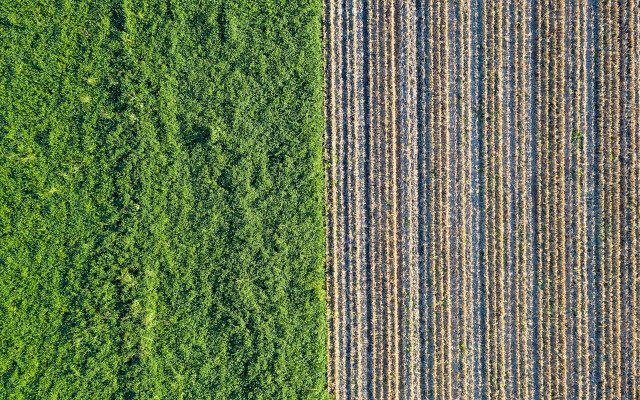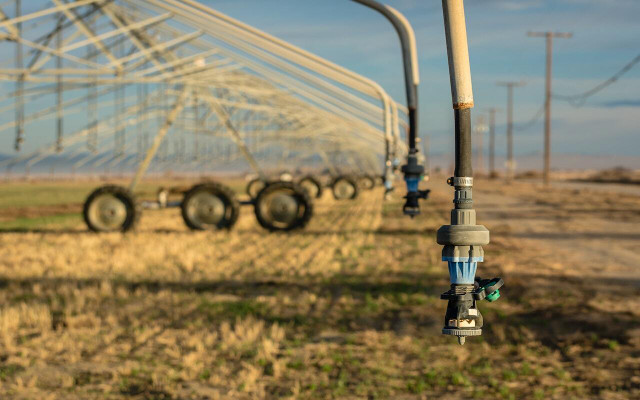Biomass fuels use organic matter to create energy, but does that make them a clean energy source? We'll look at biomass fuels and their impacts on the environment.
Biomass is not a new way of generating energy but has become more popular as developed countries look to limit their carbon emissions and ease their reliance on fossil fuels. Biomass fuels use renewable organic materials to generate energy and are becoming a major contender in the renewable energy sector.
Biomass is plant-based material used to generate heat, electricity, or energy. There are many sources used to create biomass fuels, including:
- Wood and wood waste: Pulp, sawdust, firewood, wood pellets/chips and lumber byproducts
- Animal manure and human waste
- Biogenic waste: Paper, cotton, and wool products, along with food and yard waste.
- Crop and crop leftovers: Soybeans, corn, sugarcane, etc. Some crops are grown specifically for biomass fuels, though byproducts of crops can also be used.
Converting Biomass Into Energy



(Foto: CC0 Public Domain / Unsplash / American Public Power Association)
On its own, biomass is not a source of energy, even though all organic matter does contain chemical energy from the sun. Biomass can be burned directly as a heat source and can be used to generate electricity in steam turbines. It can also be converted into liquid and gas fuels using different processes.
Thermochemical Conversion
Thermochemical conversion of biomass can produce solid, liquid and gaseous fuels. It involves two thermal decomposition processes: pyrolysis and gasification. These processes involve heating the biomass in closed and pressurized vessels at extremely high temperatures with varying oxygen levels to produce the fuels.
Chemical Conversion
Transesterification is a chemical conversion process for converting vegetable oils, animal fats and greases into fatty acid menthol eaters, which are used to create biodiesel.
Biological Conversion
The two types of biological conversion of biomass into energy are fermentation and anaerobic digestion. Fermentation converts biomass into ethanol, which is used as fuel for vehicles. Anaerobic digestion is used to produce renewable natural gas (biogas or biomethane) at sewage treatment plants and dairy and livestock operations.
The Different Types of Biomass Fuels



(Foto: CC0 Public Domain / Unsplash / Mauro Tandoi )
Certain biomass fuels are well known and are even used alongside their fossil fuel-based counterparts. This is particularly noticeable at gas stations, where blends of petroleum-based and biomass fuels are available at the pump. The most common types of biomass fuels include:
- Ethanol: A renewable fuel made from plant materials. Most gasoline for vehicles contains at least some ethanol, and it’s commonly known to be made using corn starches.
- Biodiesel: This renewable fuel is produced from vegetable oils and animal fats. It’s commonly used as a replacement for petroleum-based diesel because it is a clean-burning fuel.
- Renewable Hydrocarbon Fuels: All petroleum-based fuels burn hydrogen and carbon molecules (hydrocarbon) for energy. Biomass fuels can also generate almost identical hydrocarbons, so they are suitable for the current petroleum fuel infrastructure.
Advantages of Biomass Fuels



(Foto: CC0 / Pixabay / ybernardi)
1. Reduces Waste
Landfills have long been known to be an environmental nightmare, as they can contaminate nearby water, soil, and air. They also emit greenhouse gases. When organic matter in landfills decomposes, it releases methane, carbon dioxide and other gases into the atmosphere. By diverting waste from landfills to biomass energy plants, the organic material can be used beneficially, reducing greenhouse gas emissions. An additional bonus is that this also helps reduce the size of landfills.
2. Renewable Resource
We are surrounded by organic matter, and since biomass fuels come from organic material, it is a renewable resource. Biomass captures chemical energy from the sun during photosynthesis, and the sources can be replenished far faster than the millions of years fossil fuels require. As long as crops continue to grow, forests are replanted and humans produce waste, biomass fuels can be created.
3. Reliable Source of Electricity
Unlike other renewable resources, biomass fuel is a reliable source of energy. Biomass conversion plants operate much in the same way that coal plants do, and coal currently accounts for nearly 22 percent of the energy generated in the US. Several coal to biomass conversions have been done to use the available infrastructure for a renewable energy source. Wind and solar power rely on environmental factors to generate enough electricity; sometimes the conditions aren’t good.
Disadvantages of Biomass Fuels



(Foto: CC0 Public Domain / Unsplash / Steve Harvey )
1. Negative Environmental Impacts
When it comes to sources of energy, there is no perfect solution. While biomass fuels do have their advantages, they also take their toll on the environment in the following ways:
- Water Use: Crops grown for the sole purpose of being used as an energy source still require plenty of water to grow, and continuous irrigation can make areas more susceptible to drought.
- Soil Health: Clearing plants and other organic material from the earth can have detrimental impacts on the health and quality of soil, as many depend on biomass for compost and fertilization.
- Deforestation: Improper forestry management can also lead to deforestation, especially if companies choose to clear-cut forests to provide material for biomass energy plants.
- Pollution: Electricity from biomass fuels release pollutants into the air including carbon dioxide, nitrogen oxides and volatile organic compounds. In certain situations, research has shown that emissions and pollutants from biomass can be worse than those from fossil fuels — all of which have negative environmental and health impacts.
2. Space Requirements
The conversion of biomass into energy requires large processing plants, taking up extensive areas of land. To cut down on transportation and storage costs, many companies build their plants close to the biomass source. If biomass energy producers grow their own biomass instead of relying on agricultural waste, even more arable land is needed, taking valuable space away from farmers.
3. High Costs
Compared to other renewable resources, biomass fuels have higher costs for energy extraction. Biomass is turned into energy at production plants, which can be expensive to set up. In addition to the start-up costs, there are also high costs associated with extraction, transportation and biomass storage to get the organic matter to the plants. According to the NRDC, solar and wind power are more cost-effective than biomass fuels.
Each plant has different outputs, and much of the cost depends on the type of biomass being used to convert into fuels. There are cheaper renewable energy resources, but biomass fuels don’t require drilling into the earth for extraction, saving the significant costs associated with fossil fuels.
Read more:
- Environmental Stewardship: Definition and Examples
- Are Solar Panels Recyclable? What You Should Know
- Carbon Emissions in the US: What We Have to Change
Do you like this post?










